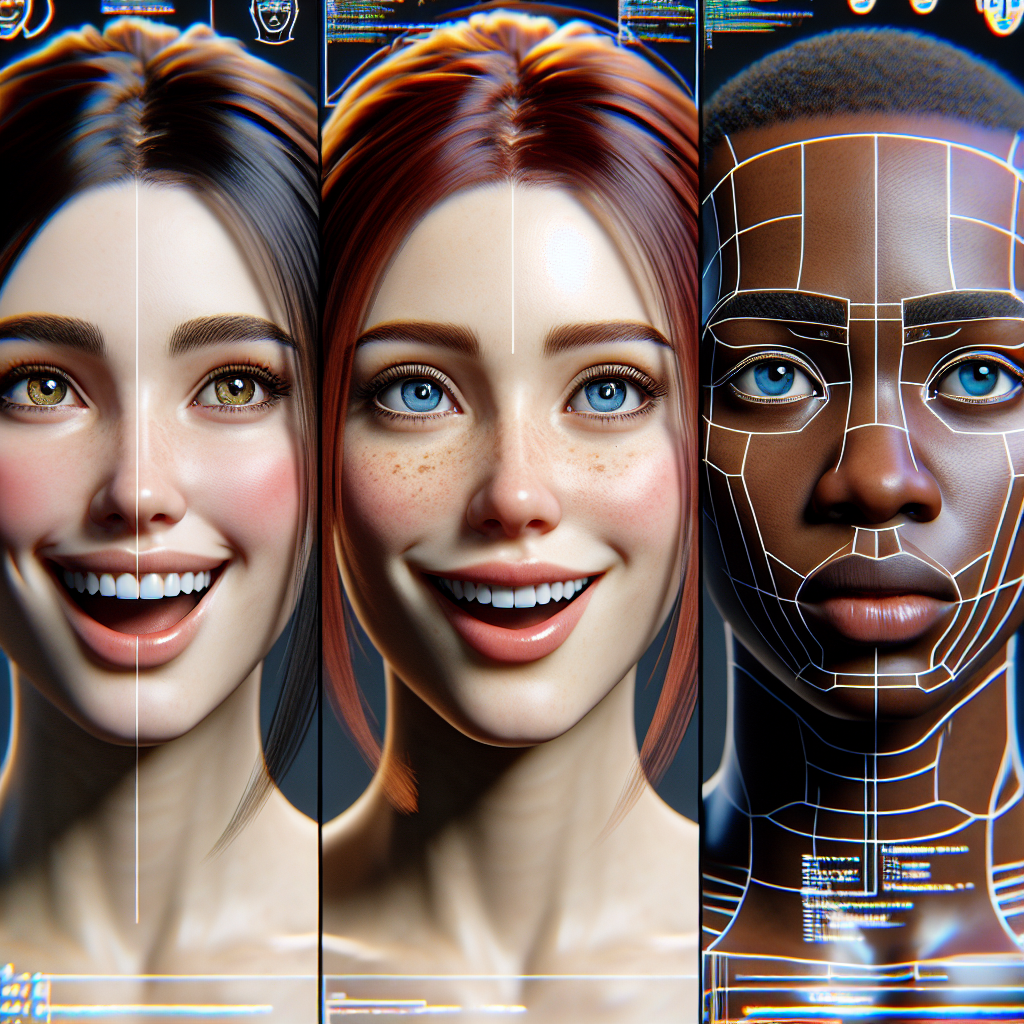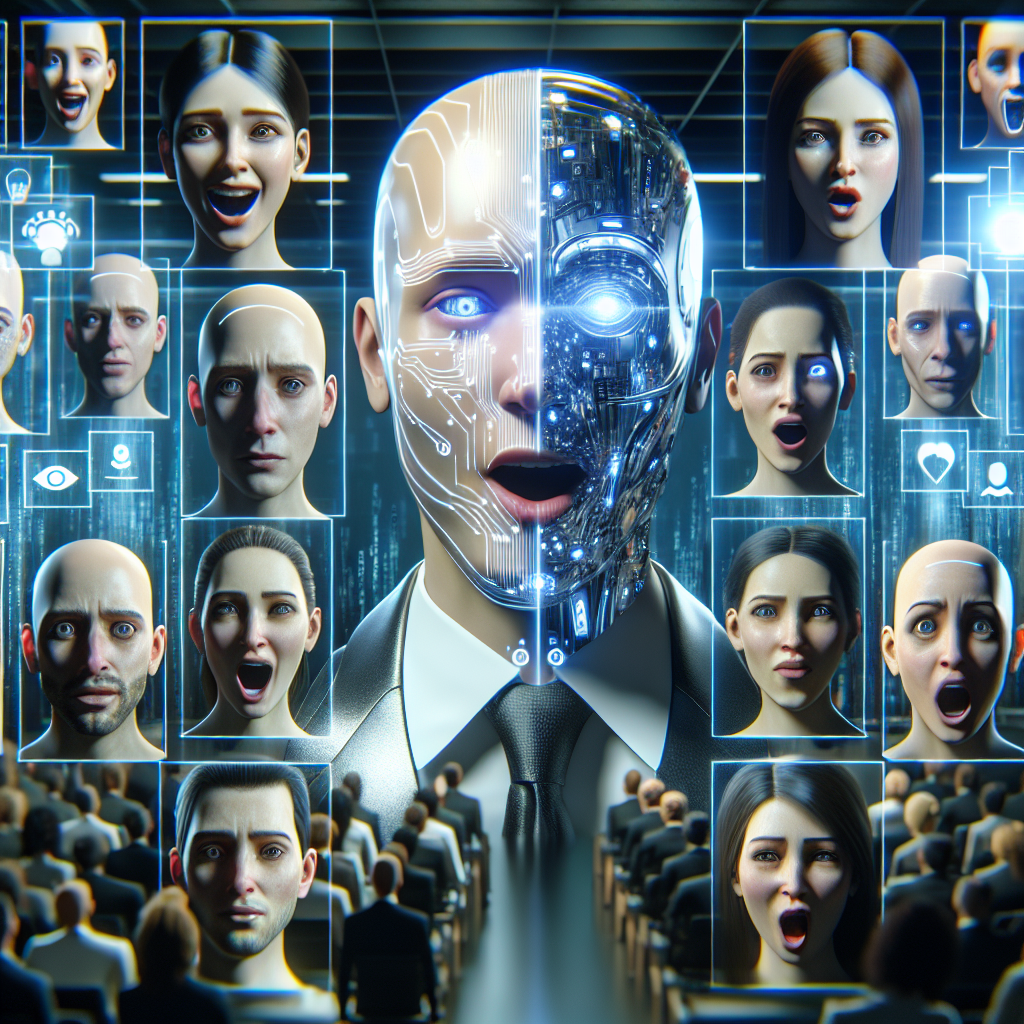-
Table of Contents
- Advancements in Video AI Avatars for Enhanced Emotional Expression
- The Evolution of Video AI Avatars
- Technological Innovations Driving Emotional Expression
- Applications of Emotionally Expressive Video AI Avatars
- Case Studies Highlighting Impact
- Challenges and Ethical Considerations
- Future Prospects
- Conclusion
Advancements in Video AI Avatars for Enhanced Emotional Expression

The realm of artificial intelligence (AI) continues to evolve at a rapid pace, particularly in the field of video AI avatars. These avatars, which simulate human appearance and behavior, are becoming increasingly sophisticated, especially in their ability to express and interpret emotions. This advancement holds significant implications for various industries, including entertainment, customer service, and telecommunication. This article explores the latest developments in video AI avatars, focusing on their enhanced emotional expression capabilities.
The Evolution of Video AI Avatars
Video AI avatars have transitioned from rudimentary digital representations to highly sophisticated entities capable of engaging in human-like interactions. Initially, these avatars were primarily used in gaming and simple customer service applications. However, recent advancements have enabled them to handle complex interactions by expressing and reading emotions, making them invaluable in more nuanced human engagements.
Technological Innovations Driving Emotional Expression
Several technological innovations have been pivotal in enhancing the emotional expressiveness of video AI avatars:
- Facial Recognition and Analysis: AI algorithms can now analyze facial expressions in real-time to detect emotions. This technology allows avatars to respond appropriately to human emotions, enhancing interaction quality.
- Natural Language Processing (NLP): Advanced NLP capabilities enable avatars to understand and generate human-like responses, considering the emotional context of the conversation.
- Machine Learning: Through machine learning, AI avatars can learn from past interactions, improving their ability to express and interpret emotions over time.
- 3D Modeling and Animation: Improved 3D modeling techniques have led to more realistic and expressive avatars that can mimic subtle human gestures and expressions.
Applications of Emotionally Expressive Video AI Avatars
Emotionally expressive video AI avatars are finding applications across various sectors:
- Customer Service: AI avatars can provide personalized customer support by reading customer emotions and responding empathetically, potentially increasing customer satisfaction and loyalty.
- Healthcare: In telemedicine, AI avatars can help in diagnosing mental health issues by analyzing patient expressions and tones, offering a new layer of diagnostic tools.
- Education: Educational AI avatars can adapt their teaching methods based on the emotional state of students, providing a more tailored educational experience.
- Entertainment: In the entertainment industry, emotionally expressive avatars can deliver more engaging and interactive content, enhancing viewer experience.
Case Studies Highlighting Impact
Several case studies illustrate the impact of emotionally expressive video AI avatars:
- Customer Service Enhancement: A tech company implemented an AI avatar for handling customer queries on their website. The avatar, equipped with emotion recognition, was able to tailor its responses based on the emotional state of the customers, resulting in a 30% increase in customer satisfaction scores.
- Improvement in Learning Outcomes: An educational platform introduced an AI avatar that adapted its interactions based on student feedback and emotional cues. This led to a noticeable improvement in student engagement and a 25% increase in course completion rates.
Challenges and Ethical Considerations
Despite the promising advancements, there are several challenges and ethical considerations in the development and deployment of emotionally expressive video AI avatars:
- Privacy Concerns: The use of facial recognition and emotional analysis raises significant privacy issues, as sensitive data is collected and analyzed.
- Accuracy and Bias: Ensuring the accuracy of emotion recognition and avoiding built-in biases in AI systems are ongoing challenges.
- Depersonalization: There is a risk that increased interaction with AI avatars might lead to depersonalization in services, affecting human values in social interactions.
- Regulatory Compliance: Developers must navigate complex regulatory landscapes to ensure compliance with global standards on data protection and privacy.
Future Prospects
The future of video AI avatars looks promising, with continuous improvements in AI technologies paving the way for more sophisticated applications. Ongoing research is focused on enhancing the emotional intelligence of avatars to make interactions even more seamless and natural. As these technologies mature, we can expect to see more pervasive use of emotionally expressive avatars across different facets of daily life.
Conclusion
The advancements in video AI avatars have revolutionized how we interact with digital entities. By enhancing emotional expression, these avatars are not only making digital interactions more human-like but are also opening up new possibilities for their application in various fields. While challenges and ethical concerns remain, the potential benefits of these technologies make them an exciting area for further research and development. As we move forward, it will be crucial to balance innovation with ethical considerations to fully realize the benefits of emotionally expressive video AI avatars.

